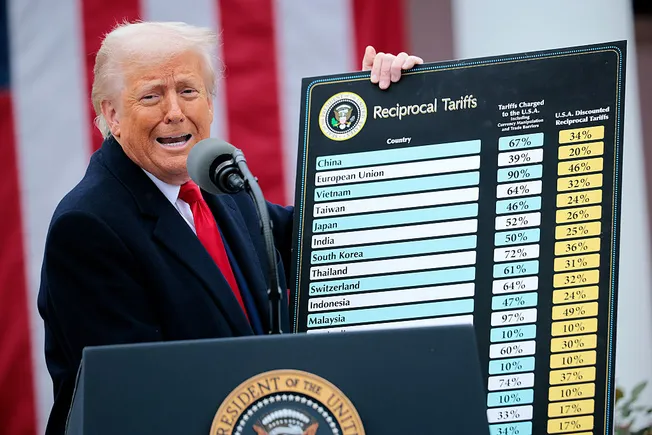Tariffs tilt the scales: US e-commerce sellers poised for margin gains amid trade tensions
Chinese sellers are now forced to play by the same rules as U.S.-based vendors. The post Tariffs tilt the scales: US e-commerce sellers poised for margin gains amid trade tensions appeared first on FreightWaves.

The ongoing trade war between the United States and China is reshaping the e-commerce landscape, potentially leading to higher margins and improved profitability for U.S. online sellers, according to Aaron Rubin, CEO of warehouse management system provider ShipHero.
Rubin posted a video to X on Tuesday giving his thoughts on what the future holds for e-commerce.
ShipHero, a leading player in the e-commerce fulfillment space, offers integrated solutions for online stores, including popular platforms like Shopify and Amazon. The company’s software streamlines order processing, picking, packing and shipping, providing real-time insights to help businesses make informed decisions.
Rubin argued that while the immediate effects of tariffs and trade restrictions may be challenging for many U.S. e-commerce businesses, the long-term outcome could be favorable for those who can weather the storm.
“Many U.S. e-commerce businesses will go bankrupt because of the tariffs, and it’s very frustrating the way they were implemented, but the net result is going to be higher margins and better profitability for U.S. e-commerce sellers over time,” Rubin said in the video.
Central to Rubin’s thesis is the elimination of Section 321, a provision that allowed for tariff-free import of goods valued under $800. This loophole, set to end on May 1, has been extensively exploited by Chinese sellers, who have dominated a significant portion of the U.S. e-commerce market, particularly on platforms like Amazon.
According to Rubin, Chinese sellers have been able to flood the U.S. market with goods by breaking up shipments and often undervaluing their products to stay below the $800 threshold. This practice has given them a substantial competitive advantage over U.S. sellers who couldn’t utilize the same tactics. The CEO estimates that a third of all Amazon merchandise comes from Chinese sellers, representing a significant portion of the e-commerce giant’s inventory.
The removal of this provision is expected to level the playing field, forcing Chinese sellers to compete under the same rules as their U.S. counterparts. However, Rubin points out that other avenues for unfair competition still need to be addressed.
One such issue is the use of nonresident importer (NRI) status, which allows Chinese sellers to import goods without establishing a U.S. entity. This arrangement makes it easier for them to misrepresent the value of their imports and face fewer consequences if caught. Rubin suggests that stricter regulations and larger bonds for non-U.S. companies could help combat this problem.
Another concern is the ease with which Chinese sellers can create shell companies in the U.S. If one entity is shut down for fraudulent practices, sellers can quickly establish a new one, whereas U.S. companies face more significant legal and reputational risks for similar actions.
While these changes are likely to benefit U.S. e-commerce sellers in the long run, Rubin acknowledges that there will be short-term challenges. U.S. consumers may face higher prices and potential shortages in certain product categories as the market adjusts. “We will see shortages and stockouts in places that we probably don’t expect because there are clusters that are only served by Chinese sellers,” Rubin explained.
Despite these hurdles, he remains optimistic about the future for U.S. e-commerce brands. He advises companies to focus on survival in the short term, emphasizing that those that can endure the transition will likely enjoy greater pricing power and profitability in the future.
The post Tariffs tilt the scales: US e-commerce sellers poised for margin gains amid trade tensions appeared first on FreightWaves.










































































































































































